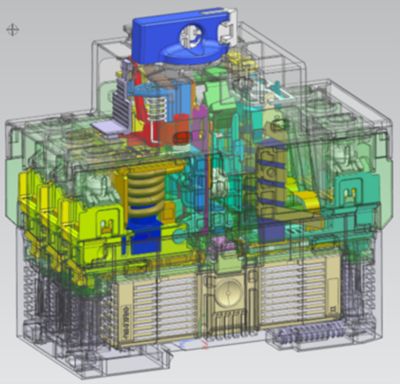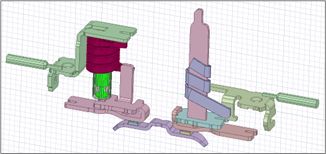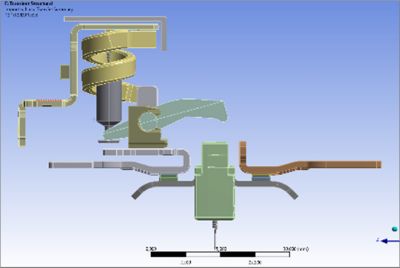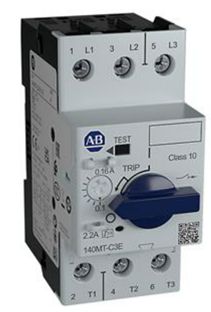Case Study
-
United States -
United Kingdom -
India -
France -
Deutschland -
Italia -
日本 -
대한민국 -
中国 -
台灣
-
-
产品组合
查看所有产品Ansys致力于通过向学生提供免费的仿真工程软件来助力他们获得成功。
-
“Virtual prototyping in Ansys Maxwell software coupled with Ansys Mechanical software makes it easy for us to understand the very complex dynamics inside the arc chamber and to change the design and tolerances inside the arc chamber of our low-voltage circuit breaker to meet the UL 60947-4-1 requirements and minimize the number of physical prototypes, ultimately reducing the time to market. The simulation software also enabled us to get the perfect guidance for the plastic components used in the arc chamber design, which helped us to reduce device cost and improve life cycle and short circuit performance.”
— Sadashiv Devidasrao Pimple, M.Sc., Project Engineer, Rockwell Automation
Circuit breakers (CBs) are crucial devices in many electrical systems, ranging from standard domestic low-voltage systems to high-voltage transmission ones. CBs are vital devices for an electrical system’s safety and reliability. The purpose of every CB is to open the circuit when sending a fault current. In the case of short-circuit currents, the CB must clear the fault in the minimum possible time, thus avoiding any damage to the downstream devices. Therefore, improving their performance (by reducing fault clearance time) is a never-ending process at the research level.
Rockwell Automation has implemented Ansys engineering simulation software to assist in the design process of a low-voltage CB architecture. Guided using a complete multiphysics coupling between transient electromagnetic and transient mechanical analysis, the design process uses 3D simulation to provide valuable insights related to the CB design. This enables Rockwell engineers to better understand the high-speed dynamic of the device and therefore identify necessary modifications to improve performances.

Rockwell Automation uses several Ansys products to cut down research and development time on circuit breaker safety updates.
Challenges
To continue the evolution of the safety and reliability of CBs in electrical systems, performance improvements were explored using a novel low-voltage CB architecture designed by Rockwell Automation. Ansys Maxwell® advanced electromagnetic field solver and Ansys Mechanical™ structural finite element analysis software were leveraged for analyzing the performances of a new generation of low-voltage circuit breakers.

Electromechanical device implemented within Maxwell 3D software

Transient mechanical simulation results and actual prototype under test
Engineering Solutions
Engineers at Rockwell Automation used a combination of Ansys products to observe and determine the reliability of three-phase CB functions.
By using the coupled transient Maxwell solver to transient Mechanical simulation, relevant dynamics within the arc chamber were observed. Ansys Workbench simulation integration platform was used to couple Maxwell 3D transient solver with the transient Mechanical solver.

Transient mechanical software simulation setup
The ability to simulate engineering changes within a CB makes the software incredibly efficient in both cost and time savings. The transient dynamics analysis can determine the time-varying displacement, strain, stress, and force response of the structure under a random combination of the steady load, transient load, and simple harmonic load. Moving metal and plastic parts were considered to understand the dynamics inside the arc chamber as well as the magnetic unit.
Benefits
- Simulations have shown critical aspects in the device dynamic behavior, enabling Rockwell engineers to implement significant changes in the arc chamber design (namely, more guidance for the spring inside the spanner holder and additional ribs to support spanner holder inside H parts). This resulted in a final relevant increment of device performances.
- For further simulation iterations, Ansys spring elements were used to reduce the computational time and achieve faster convergence.
- Simulation results were used to optimize the geometry of the spanner and spanner holder within the CB to prevent blockage during short-circuit and device-tripping tests.
- The winding feature within Maxwell software proved to be very convenient, since the software provides winding inductances, flux linkages, and induced voltages as default outputs for postprocessing purposes.

Final product present on the market
现在就开始行动吧!
如果您面临工程方面的挑战,我们的团队将随时为您提供帮助。我们拥有丰富的经验并秉持创新承诺,期待与您联系。让我们携手合作,将您的工程挑战转化为价值增长和成功的机遇。欢迎立即联系我们进行交流。










